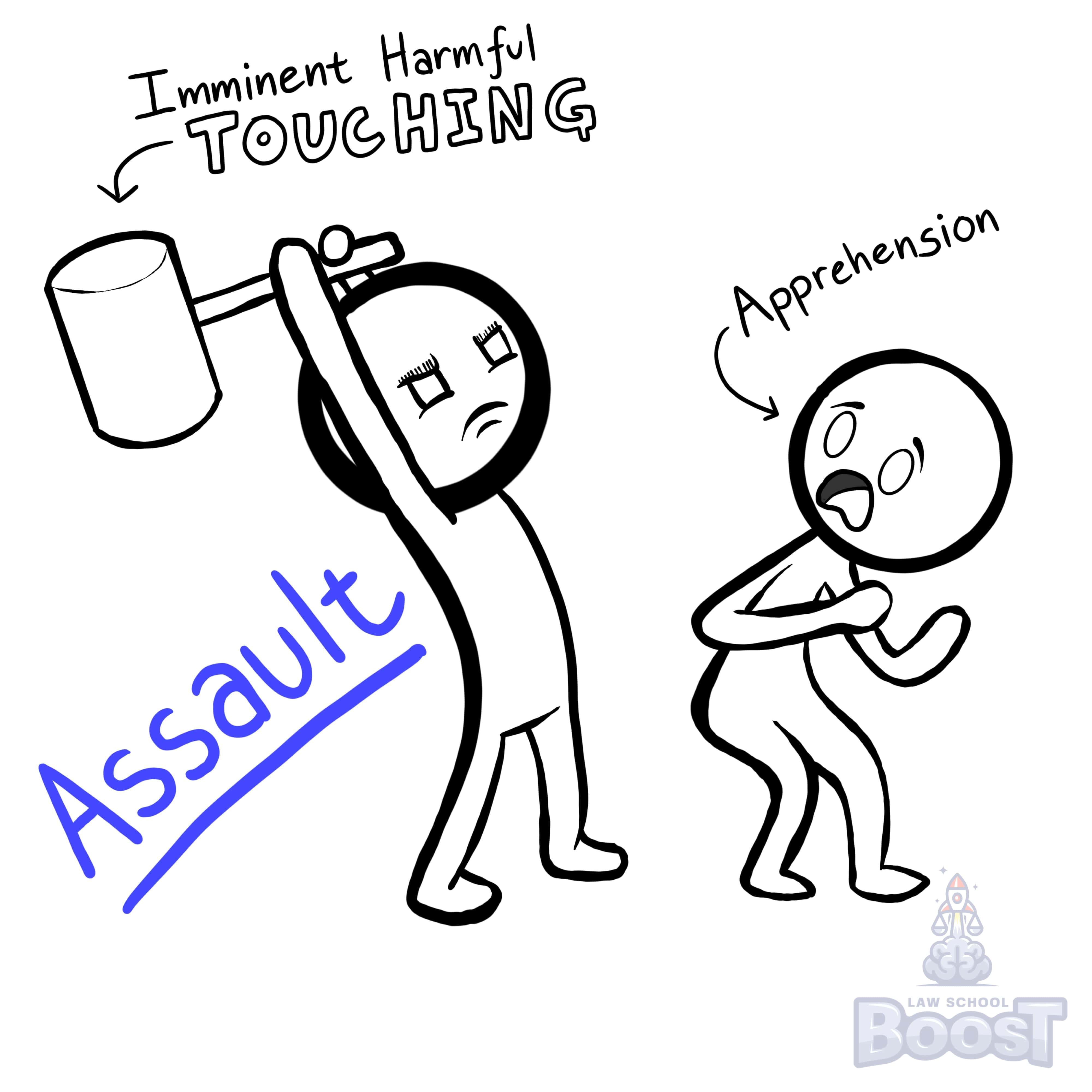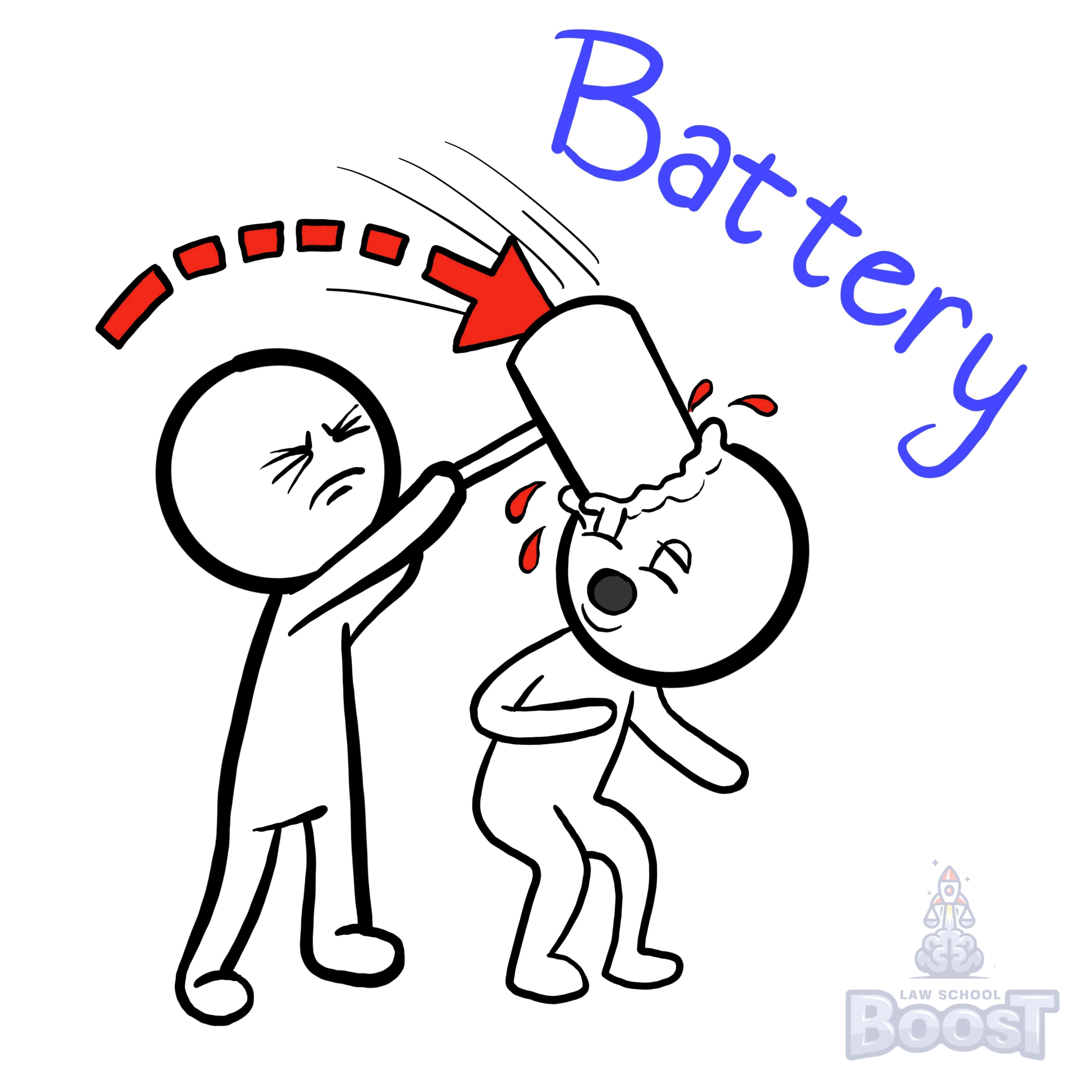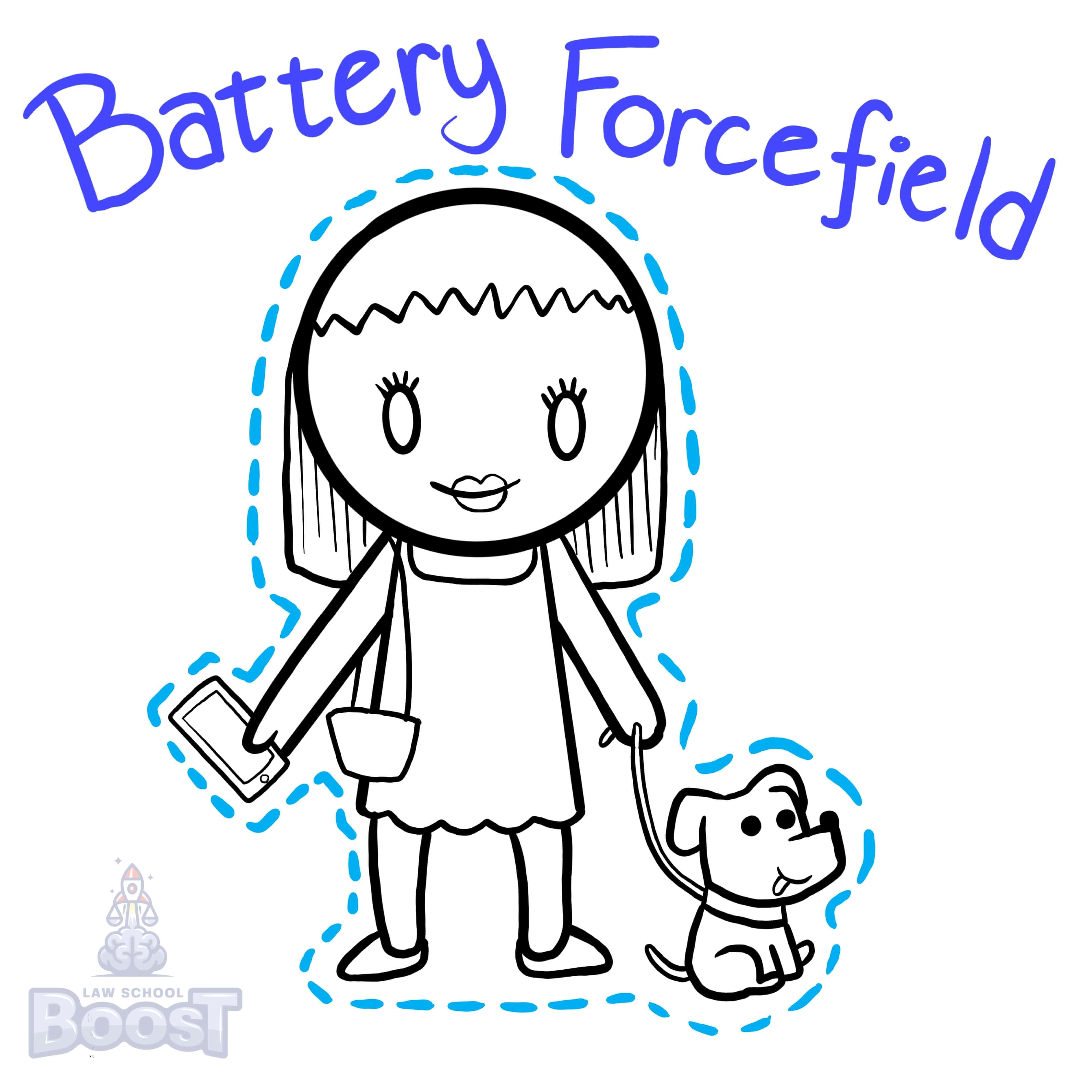👀
Torts • Intentional Torts
TORT#001
Legal Definition
Assault is (1) an act (2) done with the intent to cause either harmful or offensive contact or an apprehension of imminent harmful or offensive contact that (3) causes (4) the reasonable apprehension of harmful or offensive contact.
Plain English Explanation
Assault is one of the most common torts. It is sometimes referred to as being a "failed battery," in that the only thing separating it from being a battery is actual contact with the victim. In fact, just about every middle schooler has committed assault against one or more of their classmates by pretending to punch or strike them and then exclaiming with laughter, "Made ya flinch!"
Assault is that genuine feeling of apprehension that is felt by someone who fears they are about to be physically, and imminently, harmed by another. This awareness is key.
Assault is that genuine feeling of apprehension that is felt by someone who fears they are about to be physically, and imminently, harmed by another. This awareness is key.
Hypothetical
Hypo 1: Bob drives his car towards Sam, who is walking on the sidewalk. At the last moment, right before the car would have struck and killed Sam, Bob swerves. Sam saw his life flash before his eyes, but other than needing a new pair of pants, he is fine. Result: Sam was assaulted by Bob.
Hypo 2: Bob drives his car towards Sam, who is walking on the sidewalk. At the last moment, right before the car would have struck and killed Sam, Bob swerves. However, Sam was watching Netflix on his smartphone with his AirPods in, and had no idea that a car was ever coming at him. Result: Sam was not assaulted, because he never realized that he was in danger, and thus never had an apprehension of imminent harm. In fact, even if Bob had not swerved, but somehow missed Sam with his car, if Sam is genuinely oblivious to Bob's actions, then he is not the victim of assault.
Hypo 3: Bob and Sam are camping on opposite sides of a river 50-yards wide. Bob picks up a stone and yells at Sam that he is going to throw the stone at his head. Sam watches Bob caulk his arm back and throw the stone with all of his might. The stone travels 10 yards, splashing into the river. Result: Sam was not assaulted, because even if Bob genuinely wanted to hit Sam with a stone, it was not possible for him to do so due to the distance. Likewise, even if Sam felt a little worried that the stone may hit him, it would not have been a reasonable apprehension under the circumstances. A fact that may change this would be if Bob is a former quarterback, known for his ability to throw things surprisingly far.
Hypo 4: Bob and Sam are camping on opposite sides of a river 50-yards wide. Bob points a gun at Sam, but before he pulls the trigger, decides to put the gun away. Sam saw everything. Result: Sam was assaulted by Bob. Unlike the stone hypo, it is completely reasonable for Sam to feel a sense of apprehension from someone pointing a gun at them from 50-yards away.
Hypo 5: Bob sends Sam a text letting him know he plans on stabbing him, and promises Sam that he won't live to see tomorrow. Sam is terrified. Result: Sam was not assaulted, because the threat is not imminent enough. Even if Bob plans on stopping by Sam's house within the hour to stab him, and even if Sam truly believes this to be true, "imminence" is measured more within the moment. Future threats and risks, even if legitimate, are not sufficient to establish an imminent harmful or offensive contact.
Hypo 2: Bob drives his car towards Sam, who is walking on the sidewalk. At the last moment, right before the car would have struck and killed Sam, Bob swerves. However, Sam was watching Netflix on his smartphone with his AirPods in, and had no idea that a car was ever coming at him. Result: Sam was not assaulted, because he never realized that he was in danger, and thus never had an apprehension of imminent harm. In fact, even if Bob had not swerved, but somehow missed Sam with his car, if Sam is genuinely oblivious to Bob's actions, then he is not the victim of assault.
Hypo 3: Bob and Sam are camping on opposite sides of a river 50-yards wide. Bob picks up a stone and yells at Sam that he is going to throw the stone at his head. Sam watches Bob caulk his arm back and throw the stone with all of his might. The stone travels 10 yards, splashing into the river. Result: Sam was not assaulted, because even if Bob genuinely wanted to hit Sam with a stone, it was not possible for him to do so due to the distance. Likewise, even if Sam felt a little worried that the stone may hit him, it would not have been a reasonable apprehension under the circumstances. A fact that may change this would be if Bob is a former quarterback, known for his ability to throw things surprisingly far.
Hypo 4: Bob and Sam are camping on opposite sides of a river 50-yards wide. Bob points a gun at Sam, but before he pulls the trigger, decides to put the gun away. Sam saw everything. Result: Sam was assaulted by Bob. Unlike the stone hypo, it is completely reasonable for Sam to feel a sense of apprehension from someone pointing a gun at them from 50-yards away.
Hypo 5: Bob sends Sam a text letting him know he plans on stabbing him, and promises Sam that he won't live to see tomorrow. Sam is terrified. Result: Sam was not assaulted, because the threat is not imminent enough. Even if Bob plans on stopping by Sam's house within the hour to stab him, and even if Sam truly believes this to be true, "imminence" is measured more within the moment. Future threats and risks, even if legitimate, are not sufficient to establish an imminent harmful or offensive contact.
Visual Aids





